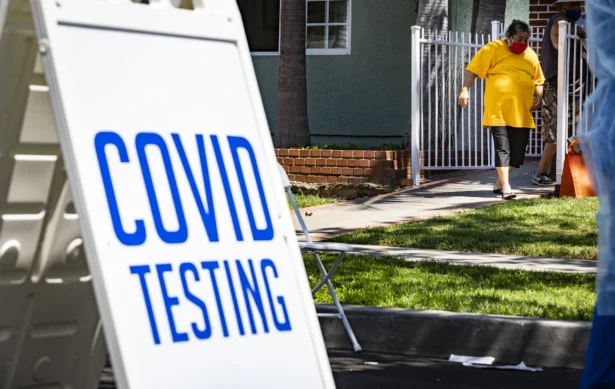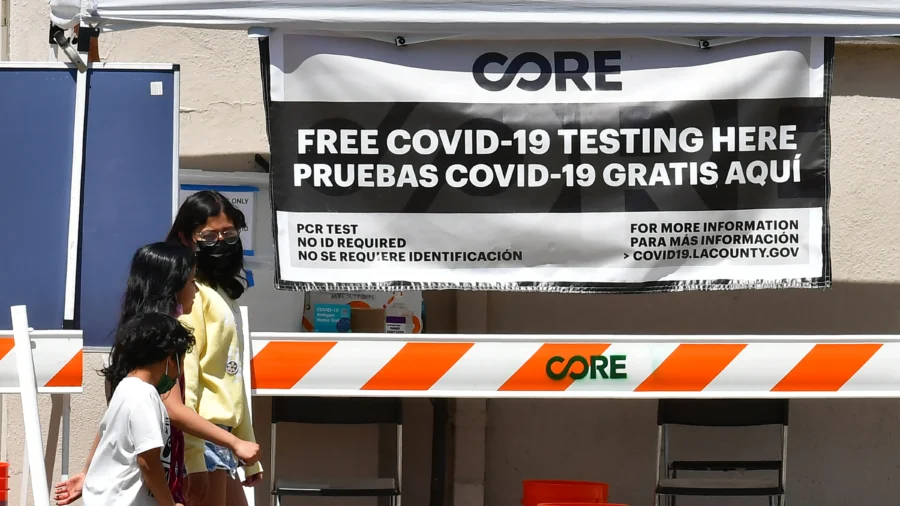People who test positive for COVID-19 don’t need to isolate for five days anymore, according to updated guidelines from the Centers for Disease Control and Prevention (CDC), which said that COVID-19 has become similar to—and in some cases less severe than—the common flu.
The new guidance, updated on March 1, says that the threat from COVID-19 has fallen to become more similar to that of other respiratory viruses, and so rather than providing additional virus-specific guidelines, the CDC is opting for a “unified, practical approach.”
This unified approach recommends that people with symptoms of COVID-19 (and other respiratory viruses) should stay home and away from others until at least 24 hours after their fever has resolved and their overall symptoms are getting better.
“This recommendation addresses the period of greatest infectiousness and highest viral load for most people, which is typically in the first few days of illness and when symptoms, including fever, are worst,” the CDC said in the new guidelines.
The changes do away with the CDC’s previous recommendations for people with COVID-19 symptoms to isolate from others for at least five days.
“This is similar to longstanding recommendations for other respiratory illnesses, including influenza,” the agency said.
The CDC pointed to substantial improvement in various COVID-19 metrics, including “far fewer” people getting seriously ill and complications like multisystem inflammatory syndrome in children becoming less common.
“Data indicate rates of hospitalizations and deaths are down substantially, and that clinically COVID-19 has become similar to, or even less severe in hospitalized people, than influenza and RSV,” the CDC noted, adding that its new guidelines are “tailored to the current level of risk posed by COVID-19.”
In further justifying its shift to the new guidelines, which basically treat COVID-19 like any other respiratory virus, the CDC said that many people with respiratory virus symptoms often don’t know which pathogen is causing their symptoms, so a unified approach is more practical.
“Folks often don’t know what virus they have when they first get sick, so this will help them know what to do, regardless,” CDC director Dr. Mandy Cohen said during a Friday press briefing.
Numerous doctors have long urged the CDC to drop the five-day isolation recommendation, though as recently as mid-February, the agency continued to hold off on making the change, citing the need for more consultation.
“We want folks to know that we’re in a new place and that’s fantastic,” Dr. Cohen said in a Friday interview on Bloomberg TV.
“We’re seeing less deaths, less hospitalizations from COVID,” while adding that the CDC continues to urge people to get the COVID-19 vaccine.
‘Personal and Societal Costs’
Noteworthy in the new guidelines that do away with the prolonged COVID-19 self-isolation period is the fact that the CDC gave a nod to the “personal and societal costs of extended isolation,” including limited paid sick time.
A number of experts and studies have warned about the harms of prolonged isolation during the pandemic.
For instance, the American Psychological Association said in November that Americans have suffered “collective trauma” related to the pandemic, with the association citing a study suggesting that the heavy-handed response to the COVID-19 outbreak, which included quarantines, school closures, business shutdowns, and near-universal mandating of masks, had a negative effect on people’s physical and mental health.
Another study that looked at a wide array of research into lockdowns concluded that such measures can be an effective tool in controlling the COVID-19 pandemic but only if “long-term collateral damage is neglected.”
The authors also said that what deserves a “special and urgent analysis” is the question of “to what extent, why, and how the dissenting (disapproved by healthcare officials) scientific opinions were suppressed during COVID-19.”
“Suppression of ‘misleading’ opinions causes not only grave consequences for scientists’ moral compass; it prevents the scientific community from correcting mistakes and jeopardizes (with a good reason) public trust in science,” they wrote.

Elsewhere, the CDC recommended on Feb. 28 that adults aged 65 and over should get an additional dose of the updated COVID-19 vaccine.
“The recommendation acknowledges the increased risk of severe disease from COVID-19 in older adults, along with the currently available data on vaccine effectiveness,” the agency said in a Feb. 28 press release.
“Adults 65 years and older are disproportionately impacted by COVID-19, with more than half of COVID-19 hospitalizations during October 2023 to December 2023 occurring in this age group.”
As of March 1, more than 13 percent of U.S. adults have received the updated COVID-19 vaccine, including 41.5 percent of adults over 65.
From The Epoch Times


